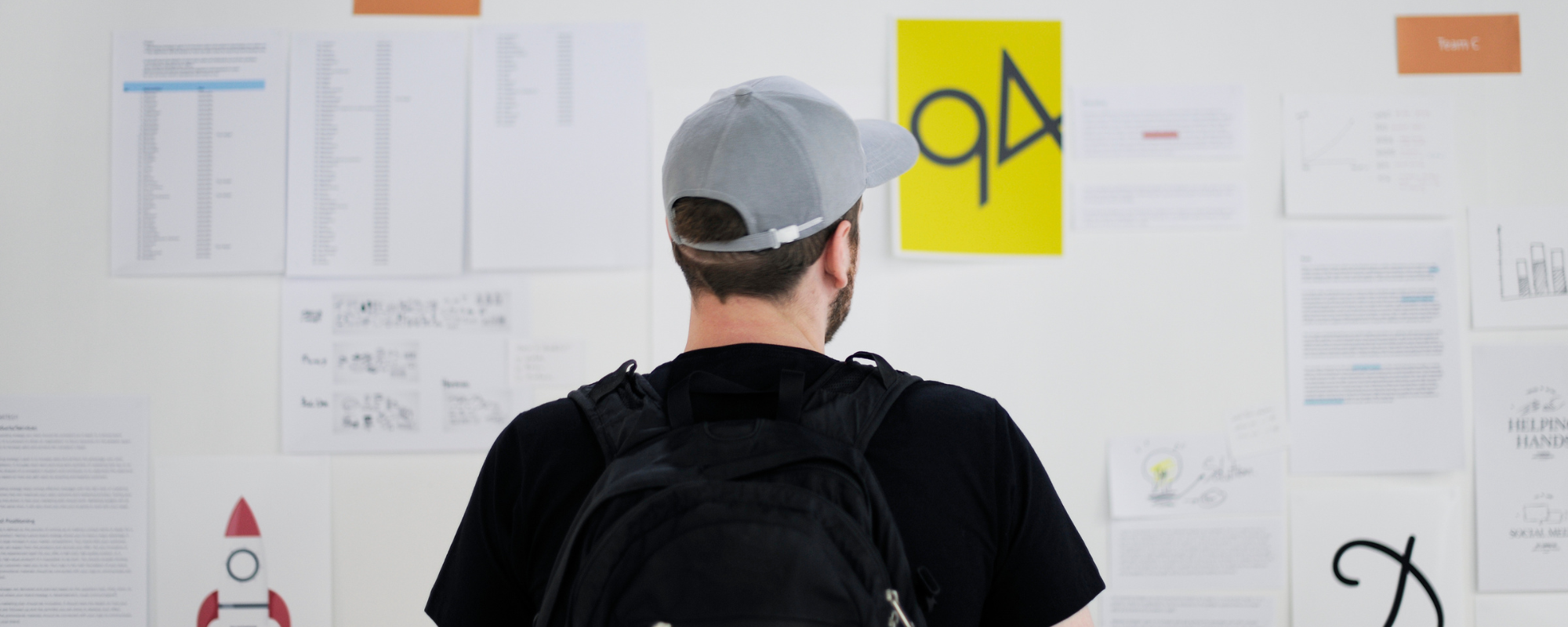How Long Is a Design Sprint? It’s one of the first questions teams ask when they’re about to dive into problem-solving and rapid validation.
Traditionally, the magic number is five days. But in practice? Sprints aren’t one-size-fits-all.
Some teams squeeze them into four, others stretch them into a week or two, depending on the challenge, the schedule, and how much testing is on the table.
In this article, we’ll break down the different sprint lengths, walk through the day-by-day flow, and share best practices to help you decide which format keeps your team moving fast without losing focus.
How Long is a Design Sprint, Really?

While the classic design sprint lasts five days, many teams now adapt the format, compressing it into 3-day sprints or even quick decision jams, without losing impact.
The Classic: 5 Days
✅Monday to Friday: Understand, sketch, decide, prototype, test.
The Compressed: 4 Days
✅Popular with experienced teams: Prep more upfront. Combine or streamline activities. Still includes user testing on the final day.
The Extended: 6–10 Days
✅Used when you need deeper discovery: Complex prototyping, or multiple test rounds. Good for high-stakes or multi-stakeholder problems.
The Remote or Hybrid: Modular Blocks over 1–2 Weeks
✅Split the phases into shorter sessions: Protect focus with clear agendas. Maintain high decision velocity with strict facilitation.
How to choose:
- If your problem is well-defined and the team is available: Go 5 days.
- If you have strong prep, a seasoned facilitator, and quick decision-makers: Try 4 days.
- If your prototype complexity is high or you need translation, engineering spikes, or multiple flows: Extend to 6–10 days.
- If calendars are tough: Go modular remote, but maintain the same sequence and decision points.
1. Phases: The Day-by-Day Flow

The core phases stay consistent across formats. Here’s the standard 5-day map with tips to compress or extend.
Day 1: Understand and align
Clarify the goal. Map the journey. Identify risks. Bring in experts for lightning talks. Choose the target moment in the journey.
Compress tip: Do stakeholder interviews and research synthesis ahead of time. Bring a 1-page problem brief to kick off.
Extend tip: Add deeper research synthesis or analytics reviews for complex domains.
Day 2: Sketch and explore
Diverge first. Create solution sketches individually. Use structured methods like Crazy 8s, then produce a detailed concept sketch.
Compress tip: Use pre-sprint inspiration boards so people sketch faster.
Extend tip: Run an extra iteration of sketching if the domain is ambiguous.
Day 3: Decide and storyboard
Review anonymously. Vote on moments of value. Debate trade-offs. Commit to one coherent storyboard for the prototype.
Compress tip: Use clear decision rules and empower a Decider to make final calls when votes are split.
Extend tip: If you have two strong directions, storyboard both and plan an A/B prototype.
Day 4: Prototype realistically
Build a façade that feels real. Use representative content. Focus on the critical path. Fake the back end.
Compress tip: Assign clear build roles and reuse UI kits. Limit scope to the test script.
Extend tip: Add parallel prototyping streams for multiple variants or platforms.
Day 5: Test with users and learn
5 users is a practical benchmark for uncovering major issues. Run structured interviews. Observe as a team. Capture patterns, not anecdotes.
Compress tip: Pre-recruit participants and finalize the test script on Day 3.
Extend tip: Add a second test day for variant comparison or different segments.
2. Variations and When to Use Them

Knowing when to use each variation helps teams stay fast and effective.
4-day Sprint
Structure: Mon–Thu or Tue–Fri. Combine Decide + Prototype planning in one afternoon.
Keep Day 4 testing. Requires more pre-sprint prep and a confident facilitator.
Dual-track Sprint
Research mini-sprint before design. Validate problem framing, personas, and success metrics.
Best for new markets or unclear value props.
Venture or product strategy sprint
Includes desirability, viability, and feasibility checkpoints with business modeling and technical spikes.
Often 6–8 days total with split sessions.
3. Roles and Team Setup

A successful design sprint depends on the right mix of people. Each role ensures ideas move smoothly from challenge to tested solution.
- Facilitator: Runs the room, protects time, keeps energy and decisions flowing.
- Decider: Final call on direction when votes split.
- Designer/prototyper: Builds the prototype efficiently.
- Product owner/manager: Holds the problem, scope, and success criteria.
- Engineer/tech partner: Ensures feasibility and helps with prototyping choices.
- Researcher: Writes the test plan, runs interviews, and synthesizes insights.
- Domain experts: Join Day 1 for context; available on-call for clarifications.
4. Inputs and Outputs: Set the Bar
Great sprints start with clear problems, real user insights, and defined goals. The output isn’t just a prototype, it’s validated learning and a confident next step for the team.
Inputs before Day 1:
- A crisp problem statement and target audience.
- Success metrics or signals for a good outcome.
- Relevant research highlights or analytics snapshots.
- Business constraints and must-haves.
Outputs by Day 5:
- A tested prototype of the critical flow.
- A pattern list of insights, not just quotes.
- A clear decision: proceed, pivot, or pause.
5. Best practices that raise your sprint’s ROI

Small tweaks make a big difference, like focusing on one clear goal, protecting team time, and testing with the right users. These practices ensure your sprint delivers maximum value.
Protect time like a product feature
- Block calendars.
- Full focus.
- Multitasking kills momentum.
Decide with structure
- Silent review, dot voting, heatmaps, and a Decider’s final call.
- Faster and fairer than open debate.
Prototype only what you test
- If it isn’t in the interview script, don’t build it.
- Depth beats breadth.
Recruit the right users
- Match the target segment precisely.
- B2B? Screen by role, company size, and tools used.
- B2C? Screen by behavior, not just demographics.
Make it feel real
- Use true-to-life data, language, and visuals.
- Authenticity drives better feedback.
Synthesize patterns, not opinions
- Look for repeated behaviors and blockers across sessions.
- Separate “nice-to-haves” from decision-critical insights.
Close with a decision and a roadmap
- End with a commit: what changes, what ships, what research follows.
- Assign owners and dates.
Common pitfalls and how to avoid them

From unclear goals to missing decision-makers, small missteps can derail a sprint.
1. Too many people in the room
Keep the core small.
Invite stakeholders at key moments.
2. Vague problem framing
Write a specific sprint question and success metrics before Day 1.
3. Over-building the prototype
Scope creep drains Day 4.
Limit to the critical path.
4. Weak user recruiting
Off-target participants lead to misleading conclusions. Spend time here.
5. No Decider
Deadlocks stall progress. Appoint one upfront.
6. Skipping the test script
Unstructured interviews produce noise.
Timeline examples you can copy
Tools and templates to speed you up
- Planning: Clear brief, goals, assumptions, and risks doc
- Collaboration: Digital whiteboards, sprint boards, and timeboxes
- Prototyping: High-fidelity UI kits, component libraries, realistic content
- Research: Screeners, consent templates, test scripts, note-taking grids
- Synthesis: Insight boards, issue trackers, decision logs
When a design sprint is the right move
- You need to validate a new idea before investing in building.
- Stakeholders disagree and need a structured path to a decision.
- Time pressure is real, and you need testable evidence this week.
- The problem spans multiple disciplines and needs cross-functional alignment.
Final thoughts
So, how long is a design sprint?
Long enough to align a team, create a realistic prototype, and learn from real users—without dragging.
For most teams, that’s 5 focused days. For expert teams with strong prep, 4 days work. For complex stakes, extend thoughtfully.
Choose your format, run the core phases with discipline, and end with a clear, evidence-backed decision.
That’s the DesignSprinters‘ way.



